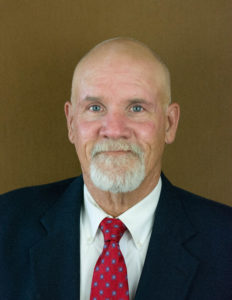Greetings and Salutations! Each year I do my diligent best to be fresh, striving to be on the cutting edge of safety and what is pertinent. However, driving—not necessarily the first thing the public thinks of when contemplating oilfield safety—is perennially the most dangerous part of any job in the Permian Basin, a danger not exclusive to our area or our industry. Every place I have worked, it has been a point to at least put up a sign at every exit from a facility that says, “You are now entering the most dangerous part of your job!” It is fairly common in our industry to do so, but it should be mandatory not only in our place of business, but at the exits of any business establishments or their respective parking lots.
According to statistics furnished by the U.S. Department of Transportation, we rank number 2 for vehicular deaths in the United States, only 20 behind California. If that doesn’t get your attention, nothing will. We tallied 4,408 deaths on the highway in 2022. California had 4,428 deaths. One would think that, due to vehicle technology, driving schools, and moneys spent on highway improvements, we collectively could get a better grasp on highway safety. Naturally we focus on the roads more that we do on driver education.
As we enter in and out of the holiday seasons, I can only surmise that it will get worse before it gets better. The state, like our industry, devotes only minimal hours to the training of safety. They preach safety, but as for making investments in safety, such usually comes on the back end, if at all. The general practice of our Safe Driving programs in our industry is at least an hour or two of classroom Driving Safety. The larger companies spend exponentially more, realizing the importance of it. Insurance companies encourage that. Some companies determine that “drivers will be drivers” and go with the odds based on their personal judgement.
After years in the oil and industry, we all know that we all know. Again it goes back to individual exception. It is all related in every aspect of our business. We improvise, we overcome. No challenge too great. Our industry was founded on risk, whether that risk lies capital deployment, operations, development, cost awareness, futures, or what have you. With our industry being so immersed in risk, the issue of risk-versus-reward lies at the heart of much of what we do. I recognize that reality and I even applaud the boldness that goes with it. However, gambling with money and gambling with lives are two entirely different things. Everyone knows or thinks they know how each employee drives. Internally we all have taken latitudes with risk, vis a vis, “I know the speed limit but I also know there is one or two miles per hour that the radar is set over the speed limit. They won’t stop me for 2 MPH over the speed limit.” That’s a rationalization. I’ve done it, before I became a safety person. Honestly, I’ve done it on occasion since I’ve become a safety guy. It’s time to get honest. And the honest truth is that the laws are the laws. Have respect for them. Have respect for the numerous people who have lost a loved one. Have respect for the ones who have not lost anyone… yet. Have respect for yourself. Even with those words of commitment and compliance, there are still no guarantees.
As I said, compliance is difficult, especially in West Texas. Compliance is difficult when people are dog tired in our business because we work long hours, white collar or blue collar. It makes no difference. Going asleep at the wheel, distracted driving, driving under the influence, or just being a renegade driver—it’s all fun and games until someone gets hurt. Rules are not made to be broken. A premature death of a loved one is not a place where anyone wants to be. I know this intimately. It is senseless. It is a senseless behavior.
As I have recently retired from the 8-5 lifestyle (and there are those of us who know that means 12-hour days, 7 seven days a week), I am fortunate enough to retire from the patch. Conversely, it begs the question: do we ever retire from a love of what we do? I do believe we are a manifestation of what we chose to do as a profession, or we would have done something else.
Better than 50 percent of the fatalities at all the companies that I worked for, as a Safety Professional, were from driving. Fatigue was hands down the number one cause of fatalities. We work hard to make a living. We do not monitor what happens in our workers’ personal lives. There are drugs, sleep deprivation, mental exhaustion, stress, and other things we cannot control. We can only try to increase their own recognition by self-awareness. You can lead a horse to water but…
A minimum of one week annual training should incorporated into the driving program, regardless of age or experience. If they are too tired to drive, they are too tired to work. Fatigue, mental or physical, can not be qualified or quantified, until after the accident. We men are the worst. We are told, by our own selves to “Suck it up, buttercup.”
Take a look at your accidents, while driving or otherwise, and look at the mental, physical, or spiritual workload of your employees. There is most often a connection.
As always, it is not how many hits you have in baseball that counts. It is how many times you reach home safely.
Dusty Roach is a safety professional based in Midland. He is also a public speaker on subjects of leadership and safety, and he maintains a personal website at dustyroach.com.











